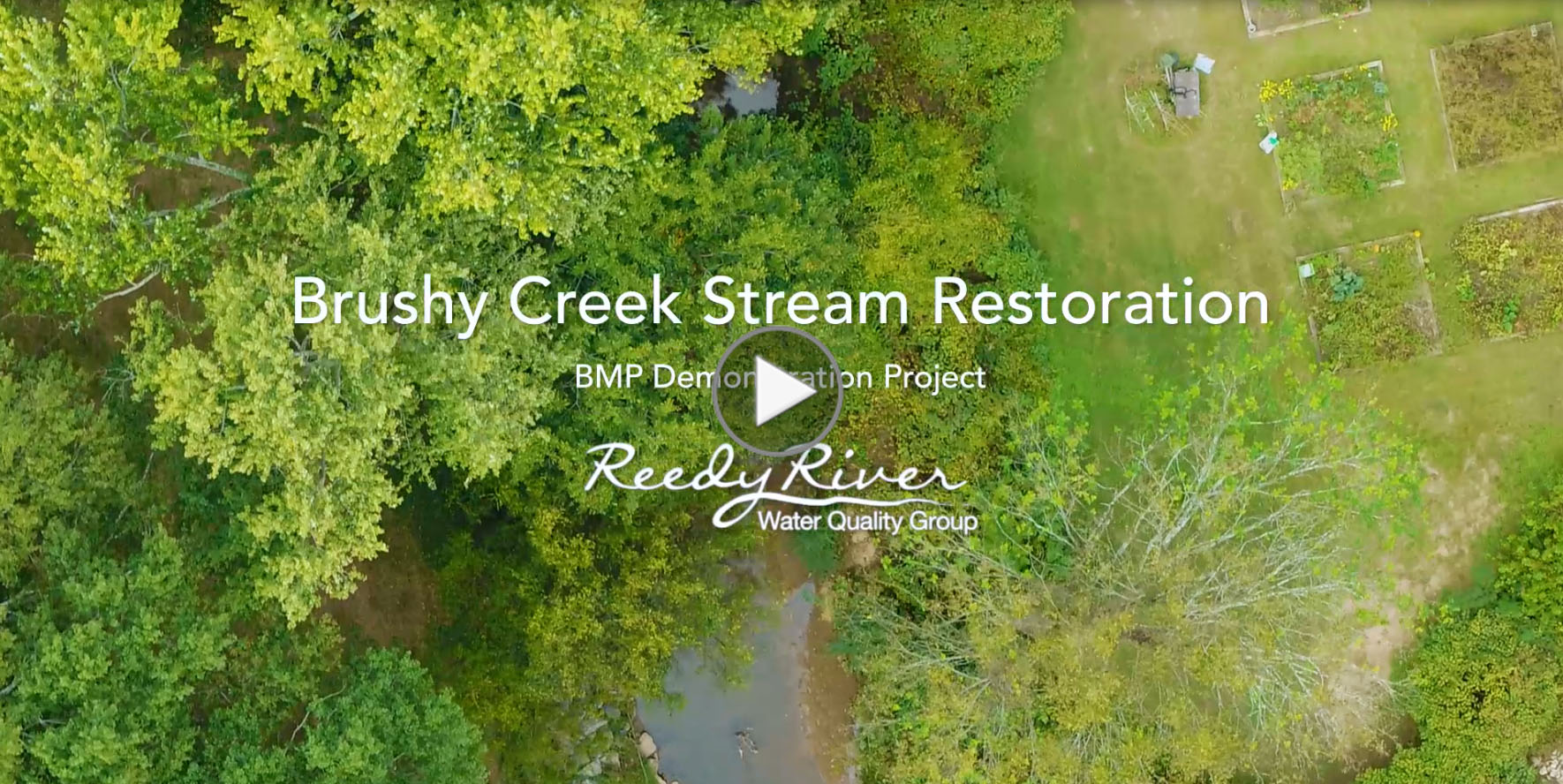
Project Overview
Brushy Creek drains a highly urbanized 2.65-square-mile watershed in downtown Greenville, SC. Following years of bank erosion and incision along this urban stream, several significant storm events exposed a large sanitary sewer gravity main operated by Renewable Water Resources (ReWa) and sparked a need for intervention. Greenville County was the lead agency, while both ReWa and the City made financial contributions to the construction costs of the project. To gain buy-in from the adjacent property owners, the County met with them early in the process to present the schematic design and pictures of what the different materials and stabilization techniques would look like upon completion.
Project construction began in June 2020 and was completed in October of the same year. This collaborative effort resulted in the stabilization and restoration of approximately 900 feet of stream in the highly urbanized area of Greenville County between Seth Street and Mills Avenue. However, this was more than just a collaborative effort to protect a sewer line and implement stream restoration. Rather than simply repairing the bank failure, the County seized the opportunity to address multiple issues, and given the visibility and accessibility of this project as well as the availability of continuous water quality monitoring data, to use the effort as a demonstration project. Both grey and green stream stabilization techniques serve as an example for private developers as they implement best management practices to achieve the environmental standards required by the County’s Land Development Division.
The stabilization measures used on this project include rock cross vanes and arm vanes, eight types of erosion control and turf reinforcement matting, riparian area improvements, and hard and soft bank toe protection. The design firm, Woolpert, worked with local manufacturers to determine the best products for providing the County with a range of coverages and levels of protection. Hard measures, including stacked boulders and interlocking grid systems were installed to protect exposed or threatened ReWa sewer lines.
Project Images